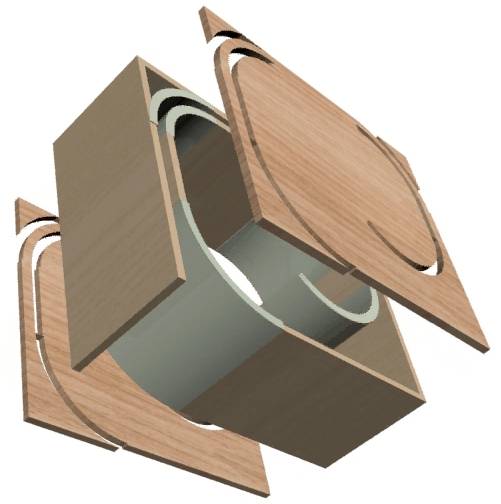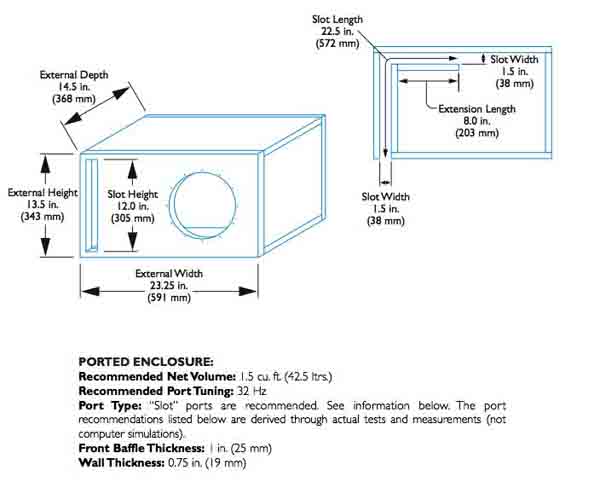Slot Port To Round Port Calculator
They can easily avoid port noise by giving more port area with a slotted port, easily round over the port entrances/ exits, they can use the same material they are using for the box and the same tools and no matter how long the port needs to be they can bend the port allong the inside of the box until they achieve their correct length. The slot port consumes the smallest amount of useable space on the baffle board. It is also the most difficult to build and tune. A round vent mounted on the back side of the cab is much easier to build and tune. The first thing you have to know is how much port area is required for your specific driver. Port Length Calculator This calculator will determine what length port to use in your ported enclosure. S elect whether you are using a round or slotted port for you box design. E nter the number of ports you are using, the internal airspace of your box, then tuning frequency you wish to use, and then hit calculate button.
Slot Port Design

Slot Port Vs Round Port
Comments

Slot Port To Round Port Calculator Estimate


- edited February 2019I always use winISD to convert. Adjust the tuning to match your 3' X 3.65' then select square port and enter your target height and width to get the length. Online calculator can do the same thing. http://www.mobileinformationlabs.com/HowTo-1Woofer-Box-CAL%20Port%20lenth%201.htm
- How about a spreadsheet from our friend Paul Carmody?HTHJim
- As Wolf posted: Pi x r^2 = L x W so:
3.1415 × (1.5')^2 = 7.068 in^2 (~ 7 sq in)
If your slot port width is 7', then the slot port height would be
7 sq in / 7' = 1' (7' wide x 1' high)
Or
7 sq in / 3.5' = 2' (3.5' wide x 2' high)
Etc - the area of the slot port should be the same as the area of the round port. Keep the length same.
If you want to really optimize, usual the round ports are in the center away from the walls, whereas slot ports use the walls as one of the side - this does affect the lenght of the port for a particular tuning - Jeff B has a formula for calculating how much of the lenght should be altered if you are near a wall rather than away from a wall (at least twice the diameter of the port... Or just skip it, you will be in the ball park The other rule of thumb was to keep the height to width ratio no more than 1 to 7, (1 to 9?)
I can't remember the exact end correction/ boundary factor for the slot port, but I've used port length -1 port height multiple times and been very close to the box model.
John H, thanks to JP I did get that email- Thanks for the answers, all. They've helped clear up the concept.
- Pretty sure that is 1 to 8 ratio. Rory relayed that info.
- Here's a picture that shows how the K value changes with slot port location. It was taken from this PETT thread: http://techtalk.parts-express.com/forum/tech-talk-forum/66368-q-slot-port-length.
- How are these calculations or examples affected when a speaker has those old fashioned slot vents sometimes found on early speakers? I'm referencing my old EV speakers that have roughly (4) 1/4' wide by 10' vents, 3/4' deep on the back of the cabinet. Was there a specific purpose for those vents, as opposed to a single vent of round or rectangular shape? Can the above vents shown by Ed Perkins be used if you desired to seal up the back of such a speaker?



